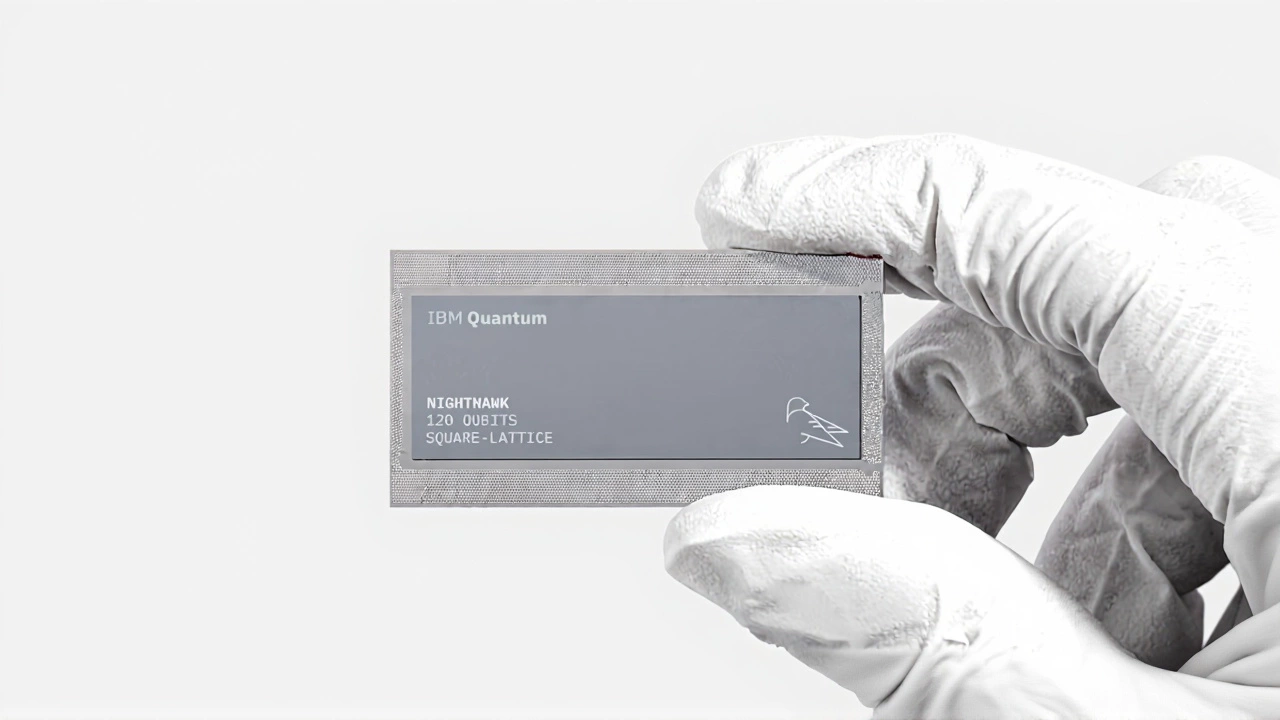On Wednesday, November 7, 2025, IBM dropped the most significant quantum computing update in years—not with a bang, but with a quiet, methodical precision that suggests they’re finally closing in on something real. At its Yorktown Heights research campus, Jay Gambetta, IBM Fellow and Director of IBM Research, unveiled the IBM Quantum Nighthawk processor, a 120-qubit machine designed not just to outperform its predecessor, but to make quantum computing actually useful. And here’s the thing: IBM isn’t just bragging. They’re handing over the proof to the world.
What Nighthawk Actually Does
The IBM Quantum Nighthawk isn’t about raw qubit count—it’s about connectivity. With 218 next-generation tunable couplers—over 20% more than the IBM Quantum Heron—it can execute circuits with 30% more complexity at lower error rates. By the end of 2025, it’ll be live on IBM Cloud, ready for users to run workloads with up to 5,000 two-qubit gates. That number isn’t static. IBM projects it’ll hit 7,500 by the end of 2026, 10,000 by 2027, and 15,000 by 2028—with over 1,000 qubits linked via long-range couplers. That’s not incremental. That’s a scaling leap.
Quantum Advantage Is Coming—And It’s Being Verified
For years, "quantum advantage" has been a buzzword, often claimed by companies with little independent validation. IBM is doing something different. They’ve submitted three specific experiments to the broader scientific community for verification. "Quantum advantage will be reached by the end of 2026 and be verified by the broader ecosystem," Gambetta said. No self-certification. No press releases alone. This is peer review in action. If confirmed, it’ll be the first time a quantum system demonstrably outperforms classical supercomputers on a practical problem—not a contrived benchmark, but something that matters.
Loon: The Quiet Giant Behind the Curtain
While Nighthawk gets the spotlight, IBM Quantum Loon is the real game-changer. It’s experimental, not commercial. But its architecture—a single lattice with longer, more efficient couplers—is designed to solve the biggest problem in quantum computing: error correction. Loon’s design allows qubits to maintain entanglement over greater distances, reducing noise and decoherence. And here’s the kicker: IBM has already proven they can decode quantum errors in real time—under 480 nanoseconds—using classical hardware and qLDPC codes. That’s faster than the blink of an eye. This isn’t theory. It’s a working prototype for fault tolerance.

The Heron That Broke Records
Even as Nighthawk prepares to launch, IBM’s current workhorse, the IBM Quantum Heron, just got its best revision yet. The latest Heron chip has 57 of its 176 possible couplings performing with less than one error per 1,000 operations. That’s industry-leading fidelity. And it’s not just accuracy—it’s speed. The Heron fleet now hits 330,000 CLOPS (Circuit Layer Operations Per Second), up from 200,000 at the end of 2024. That’s a 65% jump in throughput. For researchers running simulations, this means more iterations, faster results.
Qiskit Gets a Power Boost
Software matters as much as hardware. IBM upgraded its open-source quantum toolkit, Qiskit, with a new C++ interface. Why? Because many of the most demanding quantum applications—materials science, financial modeling, drug discovery—are built in high-performance classical environments. Now, developers working in C++ can directly call quantum routines without jumping through Python hoops. It’s a subtle shift, but it opens the door for enterprise users who can’t afford latency or compatibility issues.

What’s Next: The Road to 2029
IBM’s roadmap is terrifyingly precise. By the end of 2026: quantum advantage verified. By 2028: 15,000 two-qubit gates, 1,000+ connected qubits. By 2029: fault-tolerant quantum computing. That’s not a dream. That’s a schedule with milestones, metrics, and deadlines. And they’re sticking to it. The IBM Quantum Flex Plan is also rolling out, letting organizations pay for access based on usage—not subscriptions. It’s a move to democratize access, not just for academia, but for banks, pharma, and logistics firms.
Why This Matters
Most people think quantum computing is still science fiction. But IBM’s latest isn’t about future potential—it’s about present capability. The fact that they’re delivering hardware with measurable performance gains, while simultaneously proving error correction works at scale, means the field is moving from lab curiosity to industrial tool. If you work in cryptography, logistics optimization, or molecular simulation, this isn’t noise. It’s a countdown clock.
Frequently Asked Questions
How is Nighthawk different from Heron?
While Heron focuses on high-fidelity operations with tunable couplers, Nighthawk scales complexity through increased connectivity—218 couplers versus Heron’s 176—and a square lattice design that supports four-degree qubit connectivity. Nighthawk isn’t just faster; it’s designed to handle circuits 30% more complex, making it better suited for real-world problems like optimization and simulation.
What does "quantum advantage verified by the ecosystem" mean?
IBM isn’t claiming quantum advantage on its own. It’s submitting three specific computational experiments to independent researchers and institutions for validation. This peer-review approach ensures the results aren’t cherry-picked or artificially optimized. If confirmed, it’ll be the first widely accepted proof that quantum computers can solve problems classical machines can’t.
When will businesses be able to use Nighthawk?
IBM plans to deliver Nighthawk systems to its cloud users by December 31, 2025. Access will be through the IBM Quantum platform, with priority given to enterprise partners and research institutions in the IBM Quantum Network. The Flex Plan will allow pay-per-use access, lowering the barrier for smaller organizations.
Why is the C++ interface in Qiskit important?
Many high-performance computing environments—like those in finance or aerospace—rely on C++ for speed and efficiency. The new Qiskit C++ interface lets developers integrate quantum routines directly into existing codebases without switching languages or losing performance. This bridges the gap between quantum hardware and enterprise software stacks.
Is fault-tolerant quantum computing by 2029 realistic?
IBM’s real-time error decoding in under 480 nanoseconds using qLDPC codes is a critical milestone. Combined with Loon’s lattice architecture, the path to fault tolerance is now more concrete than ever. While challenges remain, IBM’s track record of hitting deadlines—like scaling from Eagle to Heron on schedule—makes 2029 a plausible, not speculative, target.
How does this affect global competition in quantum tech?
Google and Quantinuum have made claims about quantum advantage, but IBM is the only one delivering a full-stack roadmap with verifiable benchmarks. China’s quantum initiatives are advancing rapidly, but lack transparency. IBM’s open-access model and ecosystem verification give it a strategic edge in global adoption, especially in the U.S. and EU, where trust and reproducibility matter.
